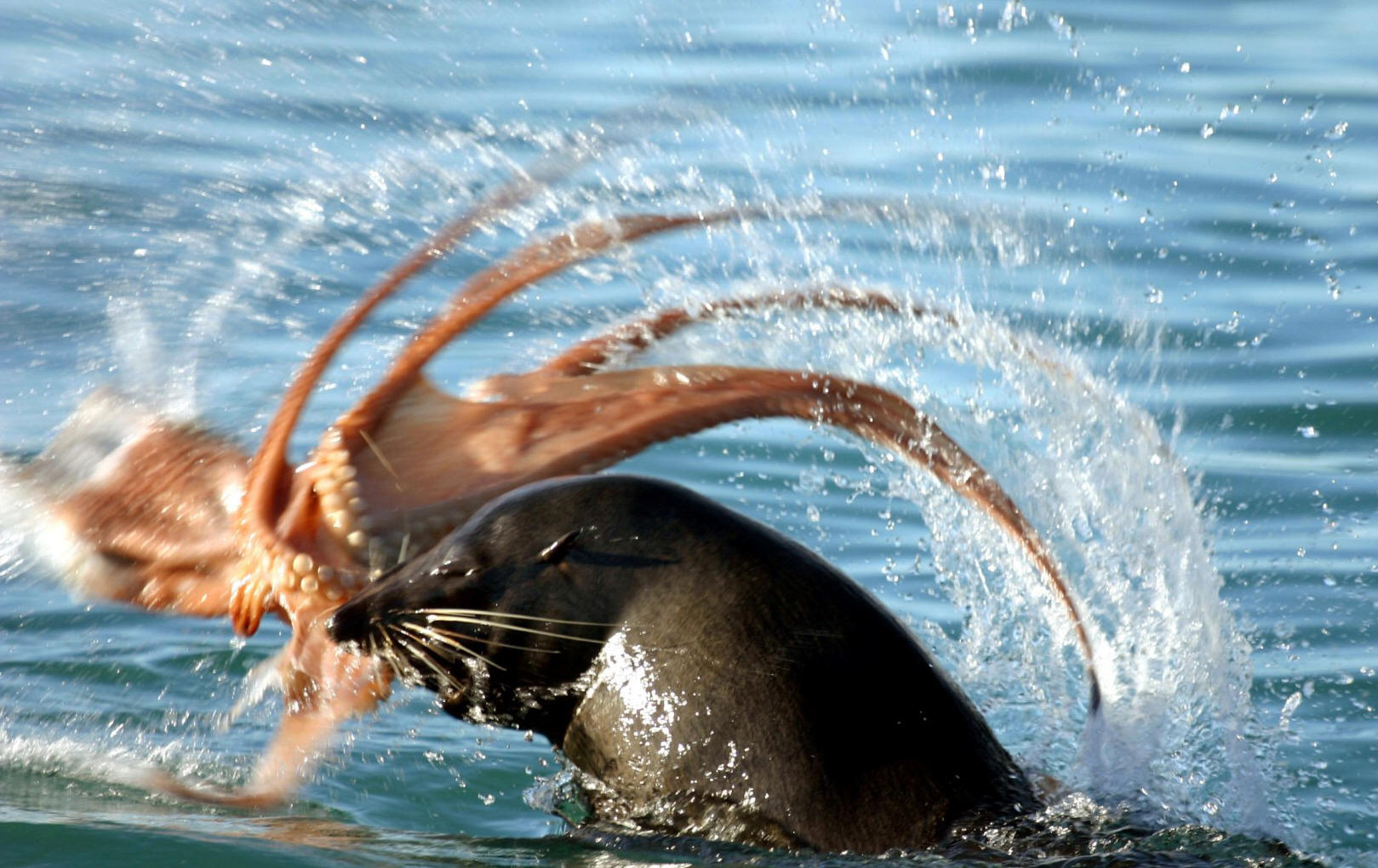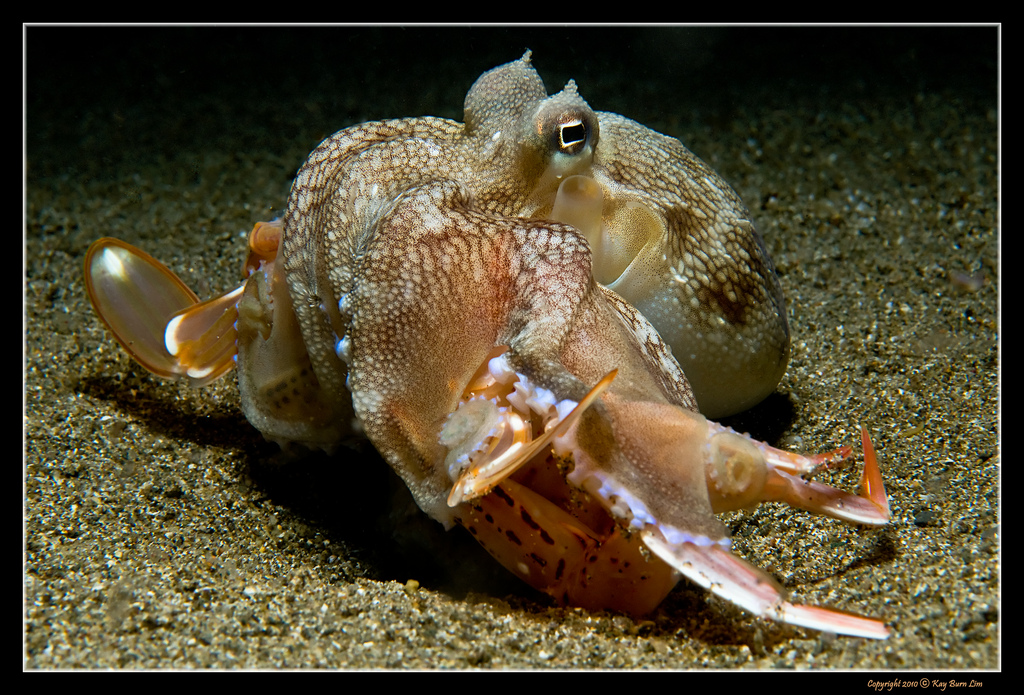Interactions
Like other sea creatures, Enteroctopus megalocyathus has parasitic, mutualistic, and predatory interactions with many other organisms. E. megalocyathus has been considered to be a predator in many marine communities of the third or fourth trophic level feeding mostly on brachyuran and anomauran crustaceans, fish and conspecific. However, at different stages in life, the E. megalocyathus will prey upon different creatures. In the juvenile stage, the octopus mainly feeds on small crustaceans while adults consume a wide variety of benthic invertebrates, organisms on sea floor with no back bones like the. When resources are low, the E. megalocyathus will turn to cannibalism, eating its own eggs and juveniles. Not only are the octopus getting food, they are also cutting down on competition (Ibáñez & Chong, 2008).
To obtain their prey, E. megalocyathus will use different hunting strategies including, chasing, stalking, and camouflage in order to ambush their prey. With their well-developed sense of vision, they are able to use their eight arms to attack their victim (Hartis, 2011). Once the prey is caught, E. megalocyathus will return to their den, crevices and caves (Ibáñez & Chong, 2008) to consume it. When finished, the remains of the meal will be placed at the entrance of the den (Hartis, 2011).
 This den is also used in protection from interactions with
predators as well as camouflage and hiding among kelp. Adult E.
megalocyathus only have a few predators. Some of these are
Dipturus chillensis, beaked skates; Squalus acanthias,
spiny dogfish; the South American sea lion, Otaria flavescens;
and humans (Alonso et al., 2000). Humans catch this
octopus for bait to catch Pacific halibut, a flatfish that can grow
to be the size of an adult human (Hartis, 2011).
This den is also used in protection from interactions with
predators as well as camouflage and hiding among kelp. Adult E.
megalocyathus only have a few predators. Some of these are
Dipturus chillensis, beaked skates; Squalus acanthias,
spiny dogfish; the South American sea lion, Otaria flavescens;
and humans (Alonso et al., 2000). Humans catch this
octopus for bait to catch Pacific halibut, a flatfish that can grow
to be the size of an adult human (Hartis, 2011).
Figure 2. Octopus being eaten by Seal. Leigh Torres. 2007.
E. megalocyathus
do, however, act as a host to some Dicymeid mesozoans. Two forms of this parasite can be found on the octopus. One form the this parasite is the G. dicyemenna.which are found in shallow-water cephalopods. The other parasite is the Dicyemenna nouveli. Not much is known about this parasite except that it is a large, and a conical-shaped species. It can reach up to 12,000 um and has a pointed anterior that will insert into the folds of the arms of the octopus (Hartis, 2011).FORWARD TO FUN FACTS for interesting information about this octopus!

